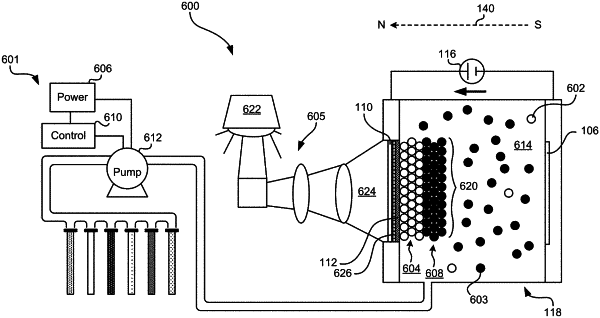| CPC H01F 41/26 (2013.01) [C25D 13/02 (2013.01); C25D 13/12 (2013.01); H01F 7/021 (2013.01)] | 29 Claims |

|
1. A magnet, comprising:
a plurality of layers, each layer having a microstructure of sintered particles,
wherein the microstructure has a physical characteristic of being sintered at a temperature that remains below the melting point of the magnet,
wherein the microstructure of at least one of the layers is characterized by the sintered particles having preferentially aligned magnetic orientations in a first direction,
wherein at least one of the layers has physical characteristics of being deposited by electrophoretic deposition according to a predefined three-dimensional pattern,
wherein the layers have a physical characteristic of being deposited above a non-planar electrode, the physical characteristic being a non-planar surface corresponding to the non-planarity of the electrode.
|